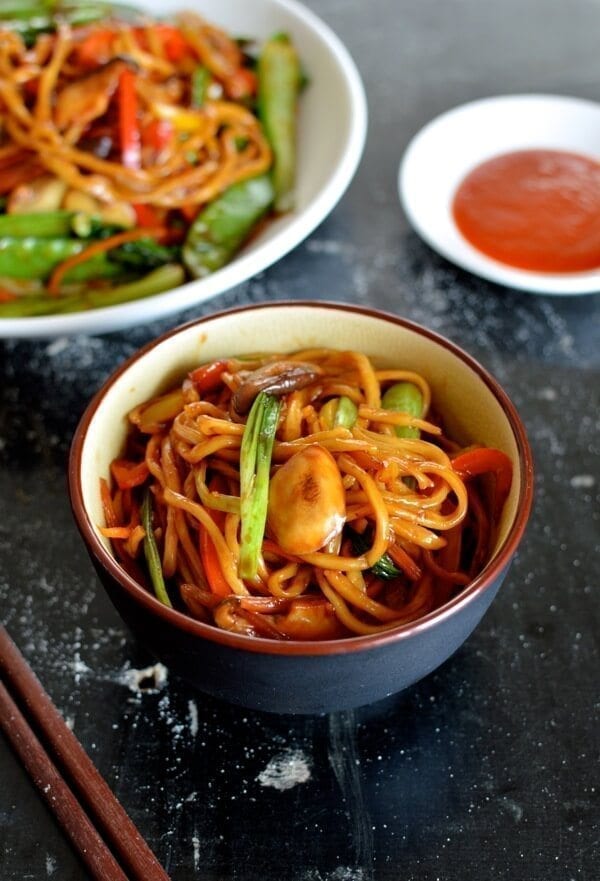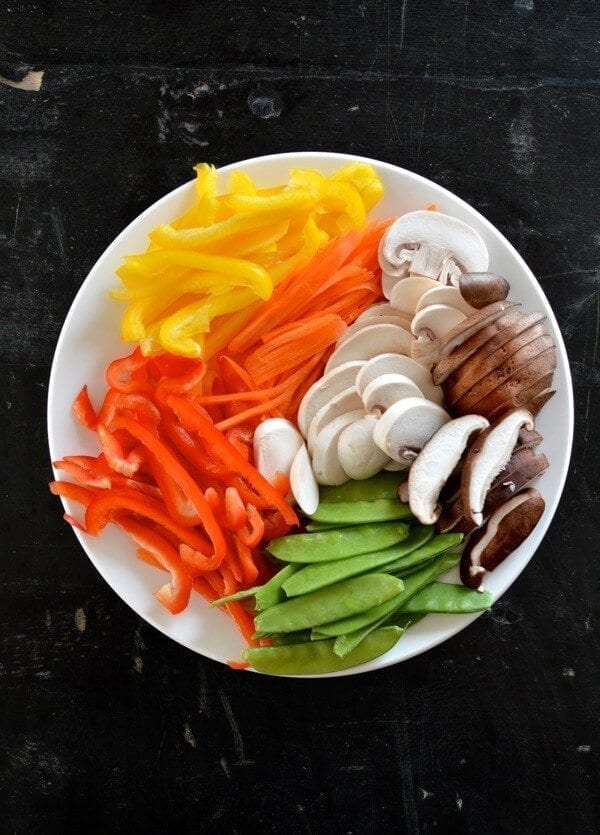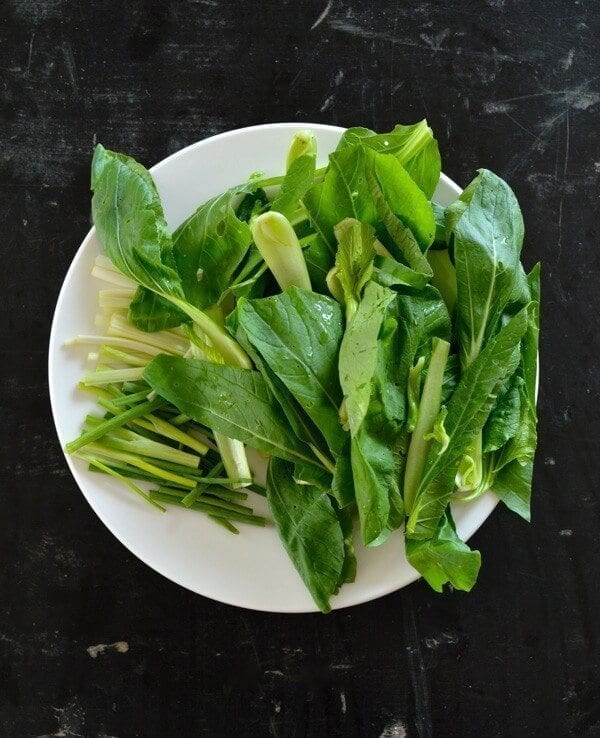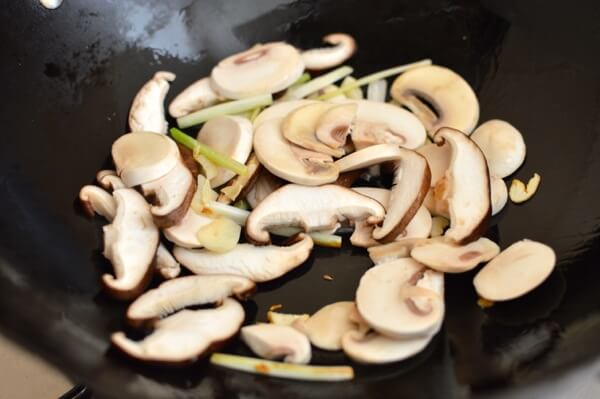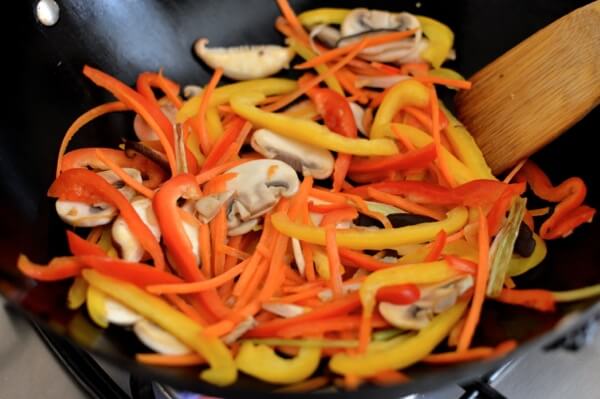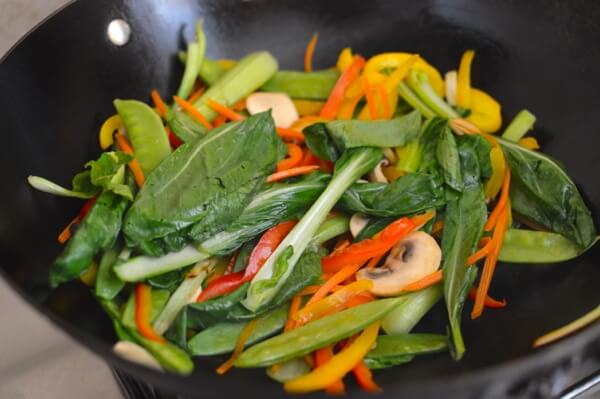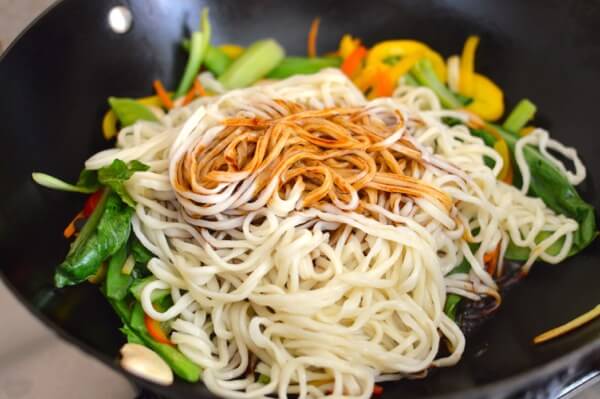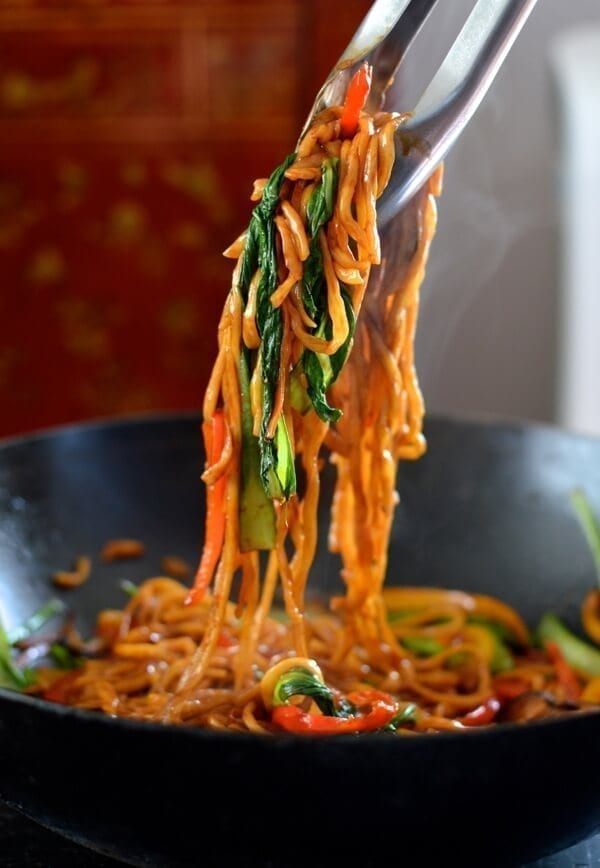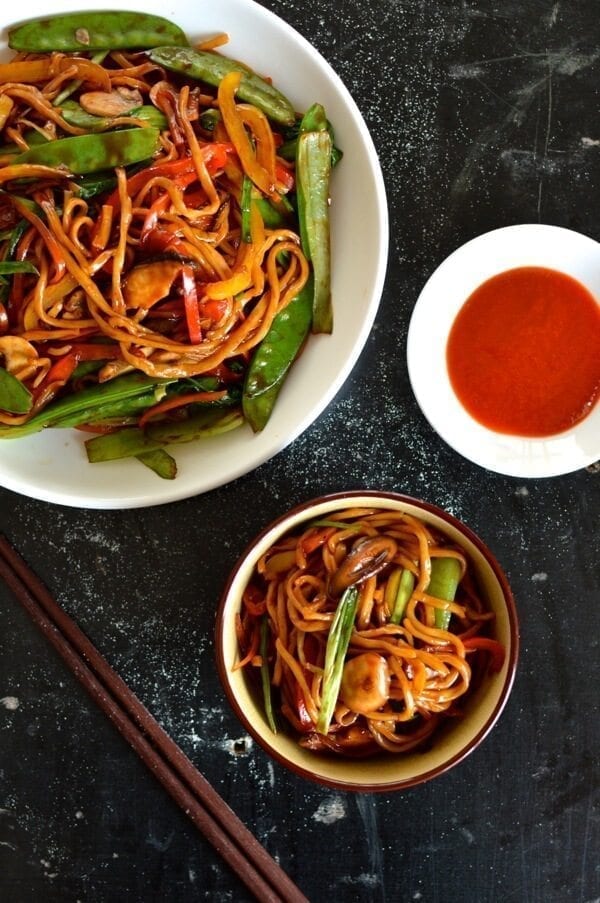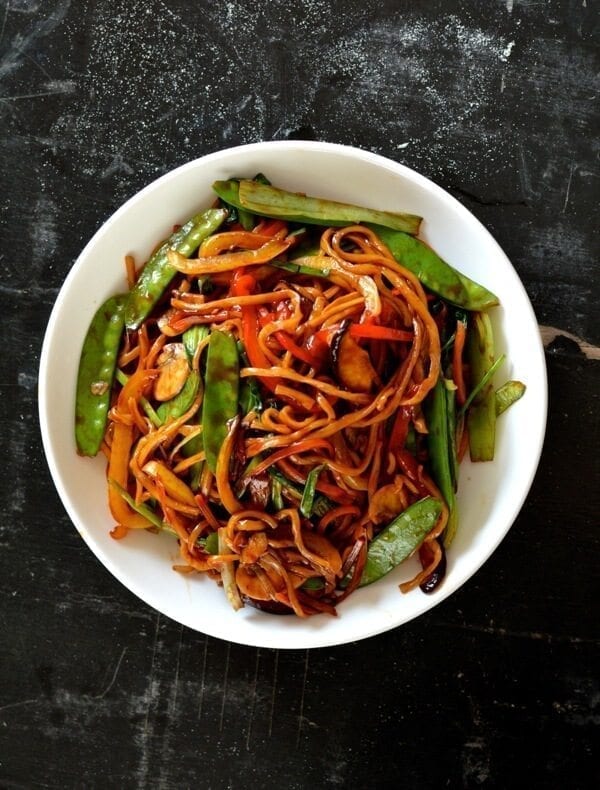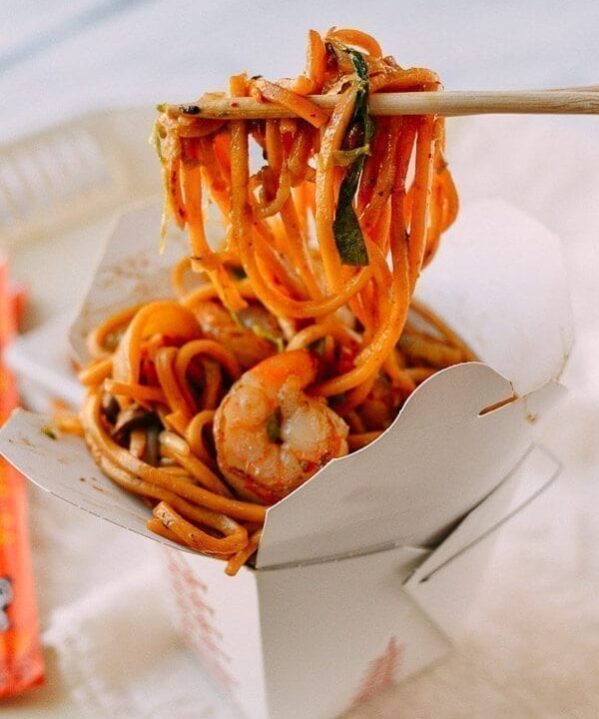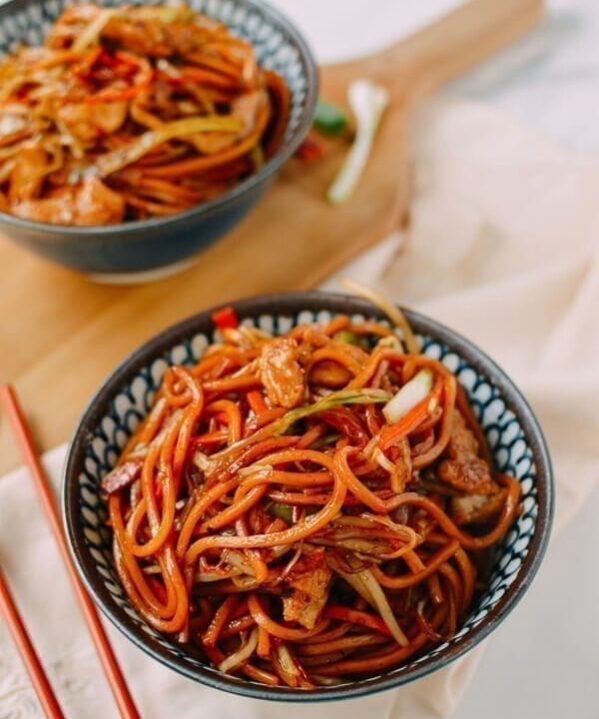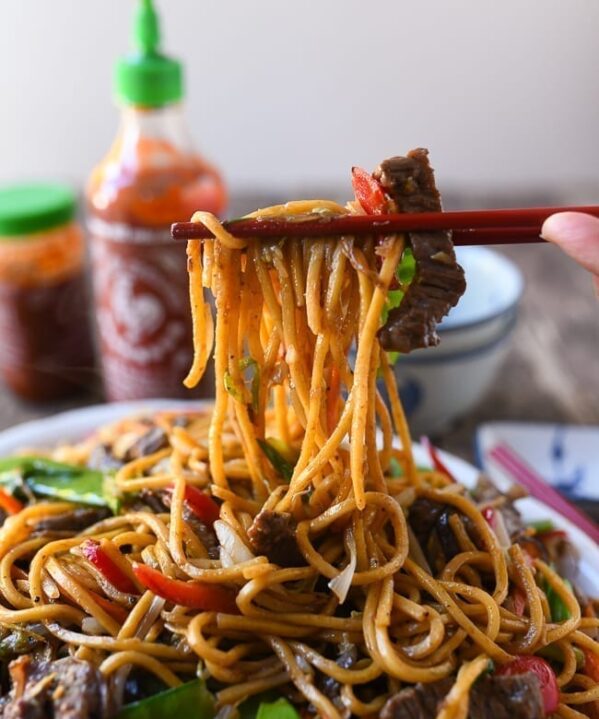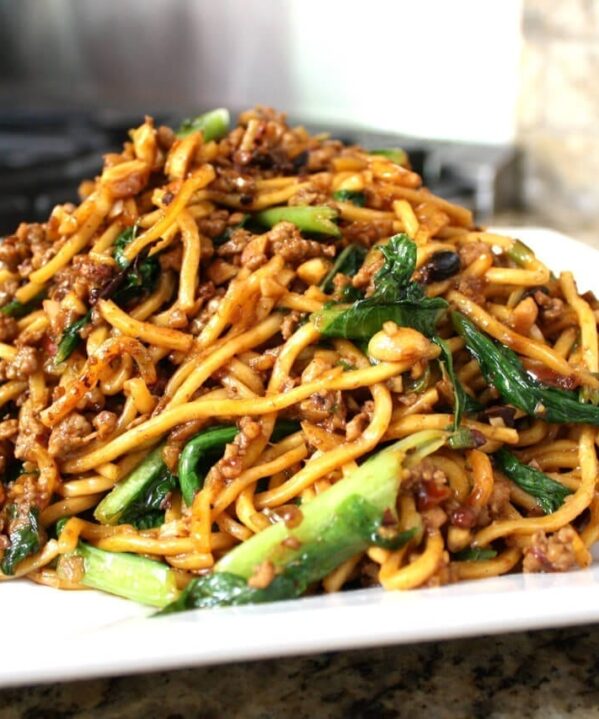This vegetable lo mein isn’t so much a takeout dish makeover so much as just a really simple, versatile noodle dish that can be a staple vegetarian meal or a go-to meatless Monday dinner.
Vegetable lo mein is healthy, tasty, and very easy to make. In China, fresh eggless hand-pulled noodles are readily available (understatement), so that’s what we used, but you can feel free to use packaged fresh white noodles or the lo mein egg noodles from the Asian grocery store. You can even sub in dried spaghetti if you have nothing else!
I like to think of this vegetable lo mein dish as a white canvas. You have your noodles and sauce as a base, and virtually any vegetables you like as your paint palette. Ok, admittedly a little corny on the metaphor front. I can practically hear the echoes of Sarah’s voice editing this post, “you and your metaphors!”
In any case, you can feel free to use onions, scallions, bean sprouts, bamboo shoots, carrots, peppers, mushrooms, napa cabbage, any leafy greens, peas, or even thinly sliced celery.
The beauty is that you can adapt this vegetable lo mein noodle dish to you and your family’s tastes and better yet, any of the local seasonal vegetables you have available.
This recipe is similar to our early and very popular Beef Lo Mein recipe. But with better photos! I think it’s great how much Sarah’s photography has improved over the past year.
She is still photographing most of our pictures, and I am still lagging behind on my photography and composition skills. But I guess we all have our strengths. One of mine is making up noodle recipes, so let’s get on with the dish!
Other notable recipes where vegetables are the star include Vegetable ramen, Vegetable fried rice and garlic baby bok choy!
Vegetable Lo Mein: Recipe Instructions
These noodles we used for this specific post were purchased at a wet market in Beijing China but you definitely should go to our Chinese Noodles and Wrappers page to see the variety of fresh and dried noodles you can use for our recipes.
Boil water in a large pot for the noodles (again, you can use fresh white noodles or lo mein egg noodles). If using the cooked lo mein egg noodles, you can skip this step, as those noodles do not require any pre-cooking.
But if using fresh white noodles or the uncooked lo mein noodles, you will have to boil them first. Just cook until al dente, drain, and rinse in cold water. Set aside.
In a small bowl, combine the dark soy sauce, light soy sauce, sesame oil, dissolved sugar, and five spice powder if using. Heat oil in a wok over high heat and add the garlic, mushrooms, and the white parts of the scallion.
Stir-fry for 30 seconds and add the peppers and carrots. Make sure your wok is searing hot, and then hit it with the Shaoxing wine. Stir fry for another minute.
Next, add the snow peas and leafy greens to the wok and cook until the greens are just wilted.
Then add your noodles. Make sure that before you add them to the pan, they’re somewhat loose and not all clumped together (you can rinse them in warm water to loosen them up before adding them to the pan).
Pour your sauce mixture over the noodles and stir-fry until the color of the noodles are uniform.
A folding or scoop and lift motion works well.
Once everything is well-combined, dish out the noodles and serve.
Serve the vegetable lo mein with your favorite chili oil or hot sauce – yes, that’s a dish of Sriracha!
Vegetable Lo Mein
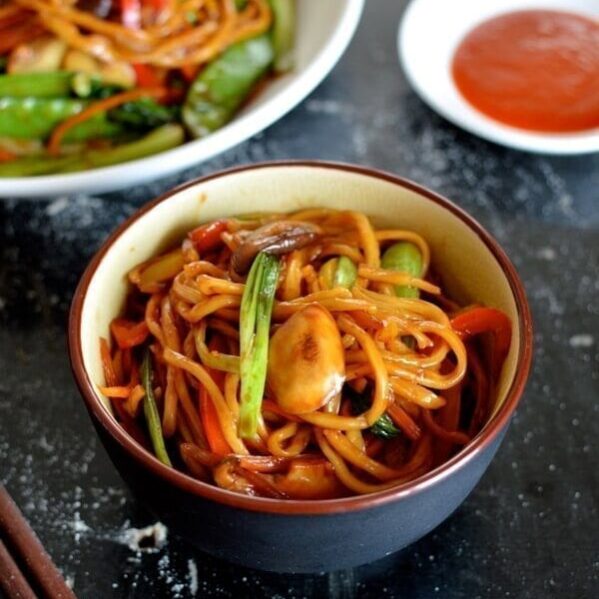
Ingredients
- 1 pound fresh white noodles or lo mein egg noodles (450g)
- 1 tablespoon dark soy sauce
- 2 tablespoons light soy sauce
- 1 teaspoon sesame oil
- 1 teaspoon sugar (plus 1 teaspoon hot water to dissolve the sugar in)
- Pinch of five spice powder (optional)
- 1 tablespoon oil
- 1 clove garlic (minced)
- 1 cup sliced mushrooms (shiitakes, button mushrooms, or anything you like)
- 1 scallion (split at the thick parts and cut into 2-inch lengths)
- 1 bell pepper (red, orange, or yellow; julienned)
- 1 small carrot (julienned)
- 1 tablespoon Shaoxing wine
- 1 cup snow peas (trimmed)
- 1 cup leafy greens (bok choy, choy sum, etc.)
Instructions
- Boil water in a large pot for the noodles. If using the lo mein egg noodles, you can skip this step, as those noodles do not require any pre-cooking. But if using fresh white noodles, you will have to boil them. Just cook until al dente, drain, and rinse in cold water. Set aside.
- In a small bowl, combine the soy sauces, sesame oil, dissolved sugar, and five spice powder, if using.
- Heat 1 tablespoon oil in a wok over high heat and add the garlic, mushrooms, and the white parts of the scallions. Stir-fry for 30 seconds and add the peppers and carrots. Make sure your wok is searing hot, and then add the Shaoxing wine. Stir-fry for another minute.
- Next, add the snow peas and leafy greens to the wok and cook until the greens are just wilted. Then add your noodles. Make sure that before you add them, they’re somewhat loose and not all clumped together (you can rinse them in warm water to loosen them up before adding them to the wok).
- Pour your sauce mixture over the noodles and stir-fry until the color of the noodles are uniform. A folding or scoop-and-lift motion works well for that. Once everything is well-combined, dish out the noodles and serve.
